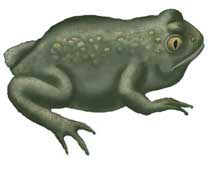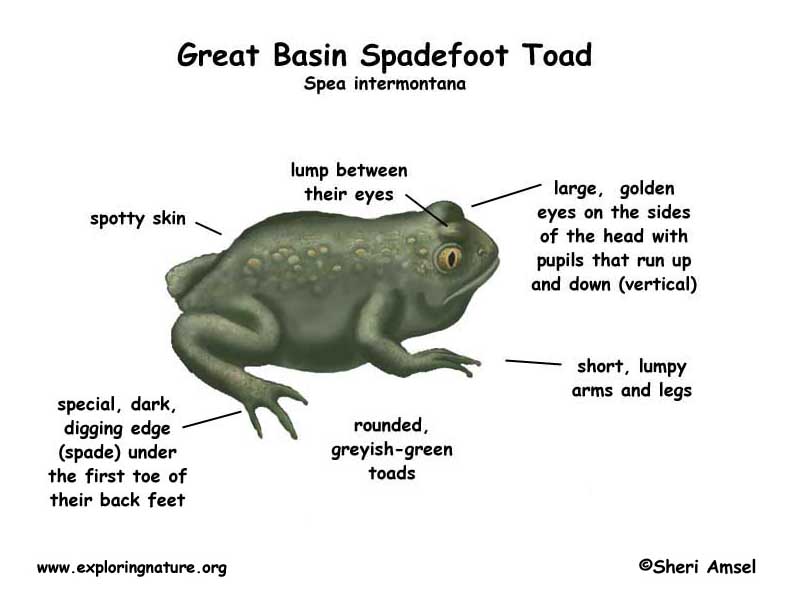

They are found in southern British Columbia, Canada south to California, Washington, Oregon, Idaho, Wyoming, Utah, Colorado, Nevada, and Arizona.
They live on dry grasslands and open woodlands near some water for breeding.
They are small (up to 2.5 inches long), rounded, greyish-green toads. They blend very well with their surroundings. They have large, golden eyes on the sides of the head with pupils that run up and down (vertical). They do not have the large ear drums (tympana) or bumpy skin of the American toad but do have a lump between their eyes. They also have spotty skin and light stripes down their sides. They have relatively short, lumpy arms and legs with a special, dark, digging edge (spade) on the first toe of their back feet for which they were named. Females are larger than males.
The use their spade toe to dig into loose soil and often take shelter in other animal burrows. This protects them from hot weather and predators during daylight hours. They dig into the ground to hibernate all winter, coming out in the soring to breed.
They eat insects, small invertebrates, algae and water plants.
Males and females come together at a pond in the spring for breeding. Males have a loud call attracting females to mate. They lay hundreds of eggs attached to rocks or sunken logs on the bottom. Tadpoles take up to 2 months to form small the toads.
Kingdom: Animalia
Phylum: Chordata
Class: Amphibia
Order: Anura
Family: Pelobatidae
Genus: Spea
Species: S. intermontana
When you research information you must cite the reference. Citing for websites is different from citing from books, magazines and periodicals. The style of citing shown here is from the MLA Style Citations (Modern Language Association).
When citing a WEBSITE the general format is as follows.
Author Last Name, First Name(s). "Title: Subtitle of Part of Web Page, if appropriate." Title: Subtitle: Section of Page if appropriate. Sponsoring/Publishing Agency, If Given. Additional significant descriptive information. Date of Electronic Publication or other Date, such as Last Updated. Day Month Year of access < URL >.
Amsel, Sheri. "Toad (Great Basin Spadefoot)" Exploring Nature Educational Resource ©2005-2024. December 13, 2024
< http://www.exploringnature.org/db/view/Toad-Great-Basin-Spadefoot >

